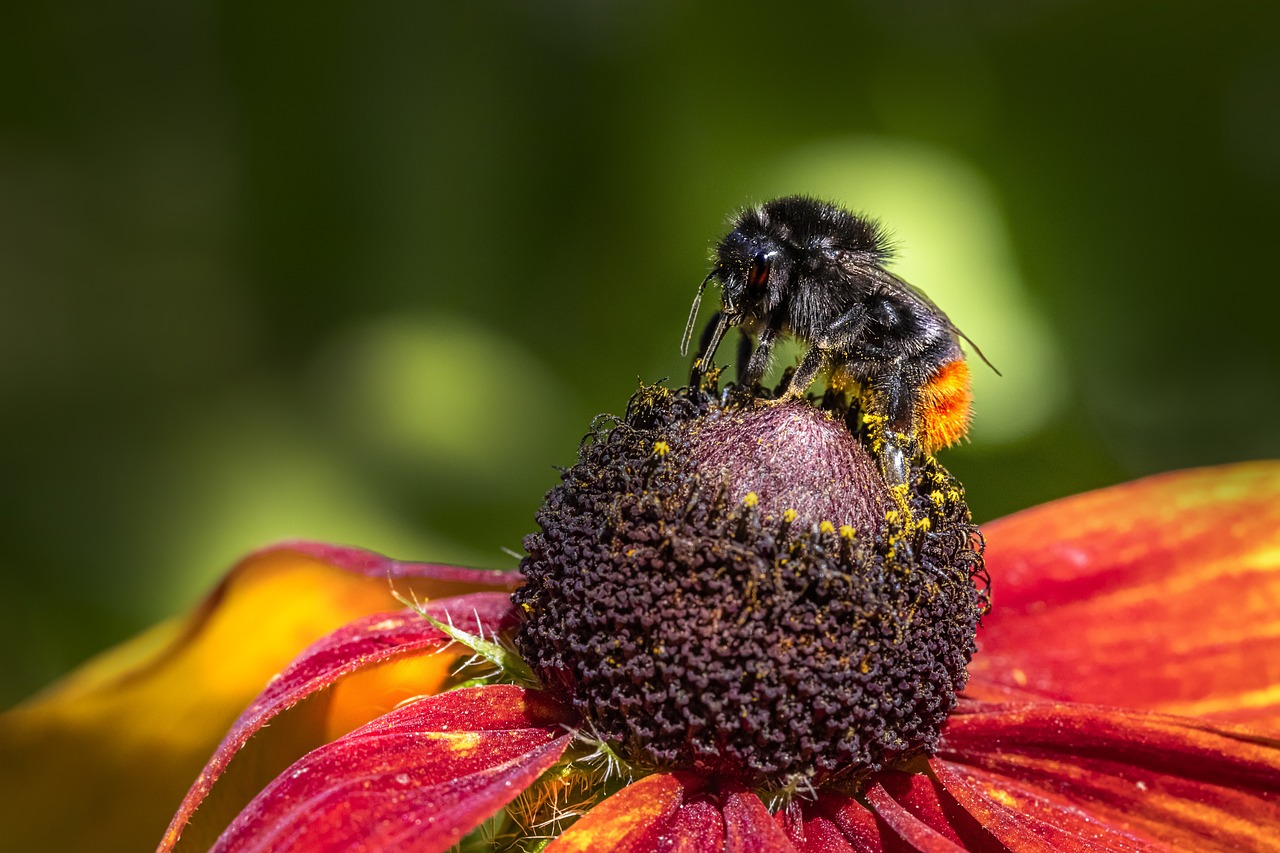The Hill Cuckoo-bee (Bombus rupestris) is a fascinating species of bumblebee known for its parasitic behavior. Unlike typical bumblebees that build and maintain their own nests, the Hill Cuckoo-bee infiltrates the nests of other bumblebee species, relying on them to rear its offspring. Here’s an overview of this unique bee:
Description
- Size:
- The Hill Cuckoo-bee is a large bumblebee, with queens typically measuring around 20 to 22 millimeters in length. Males are slightly smaller, averaging around 15 to 18 millimeters.
- Appearance:
- Coloration: This species is primarily black with a few patches of pale yellow or orange on the thorax and near the tip of the abdomen. Unlike many other bumblebees, it lacks the characteristic yellow or white bands that are common in its relatives.
- Wings: The wings are clear with a slight brownish tint, similar to other bumblebees.
- Body Structure: Like other bumblebees, Bombus rupestris has a robust and hairy body, which helps with thermoregulation and pollination, although it is not as effective a pollinator as non-parasitic species.
Behavior and Ecology
- Parasitism:
- The Hill Cuckoo-bee is a brood parasite, meaning it does not construct its own nest. Instead, the female (queen) invades the nests of other bumblebee species, particularly those of the Bombus lapidarius (Red-tailed Bumblebee). Upon entering a host nest, the Hill Cuckoo-bee queen typically kills or subdues the resident queen and takes over the nest. The host workers are then coerced into raising the offspring of the cuckoo-bee.
- Reproduction:
- After taking over a nest, the Hill Cuckoo-bee queen lays her eggs in the host’s brood cells. The host workers, unaware of the intrusion, continue to care for the brood as if they were their own. The Hill Cuckoo-bee larvae are reared to adulthood by the host workers, eventually emerging as either males or new queens.
- Habitat:
- Bombus rupestris prefers habitats such as grasslands, meadows, heathlands, and areas with abundant flowering plants. It is commonly found in areas where its host species, particularly the Red-tailed Bumblebee, is present.
Lifecycle
- Queens:
- The queens emerge from hibernation in spring and immediately begin searching for a host nest to invade. After successfully taking over a nest, they focus solely on reproduction and do not contribute to foraging or other nest maintenance activities.
- Males:
- Males are produced later in the season and are primarily involved in mating. After mating, the males die, while the fertilized queens go into hibernation to start the cycle again the following year.
- Hibernation:
- After mating in late summer or early autumn, the new queens find a suitable location to hibernate through the winter, typically in loose soil, leaf litter, or other sheltered areas.
Ecological Role
- Pollination:
- Despite its parasitic lifestyle, the Hill Cuckoo-bee still contributes to pollination, albeit less so than its host species. The adult bees visit flowers to feed on nectar, inadvertently transferring pollen between plants.
- Biodiversity:
- The existence of parasitic bees like the Hill Cuckoo-bee adds to the complexity of ecosystems, demonstrating the diversity of survival strategies among bumblebees.
Conservation Status
- Distribution:
- Bombus rupestris is found across much of Europe and parts of Asia. It is generally widespread but can be locally rare depending on the availability of suitable host species and habitats.
- Threats:
- Habitat loss, agricultural practices, and the decline of host bumblebee populations can all negatively impact the Hill Cuckoo-bee. Conservation efforts aimed at protecting bumblebee habitats and maintaining healthy populations of host species are crucial for the survival of this and other cuckoo-bees.
Summary
The Hill Cuckoo-bee (Bombus rupestris) is a unique bumblebee species known for its parasitic behavior, where it exploits the nests of other bumblebees to raise its young. With its distinctive appearance and fascinating life cycle, the Hill Cuckoo-bee plays a specialized role in its ecosystem, contributing to the biodiversity and complexity of bumblebee communities. Although it faces threats from habitat loss and declines in host populations, the Hill Cuckoo-bee remains an important and intriguing component of the natural world.
Views: 553
Subscribe to the newsletter:
